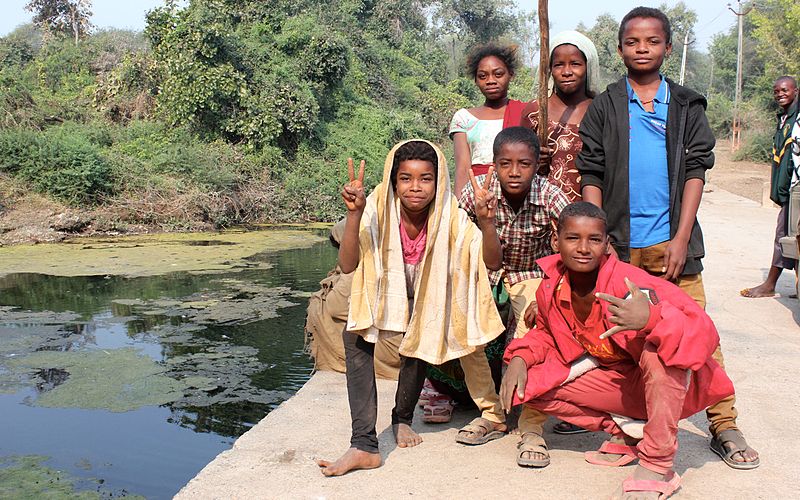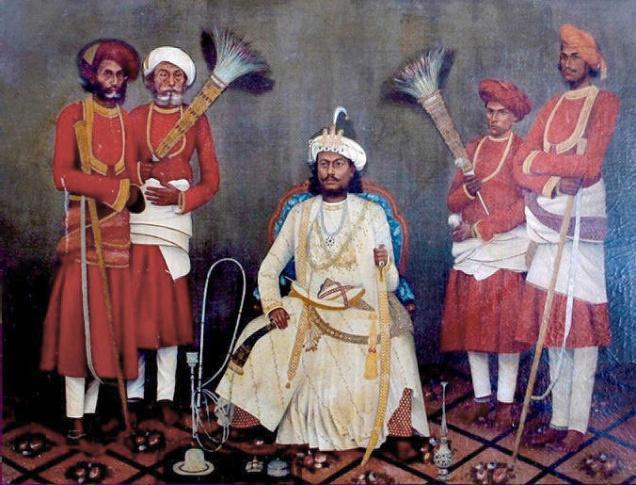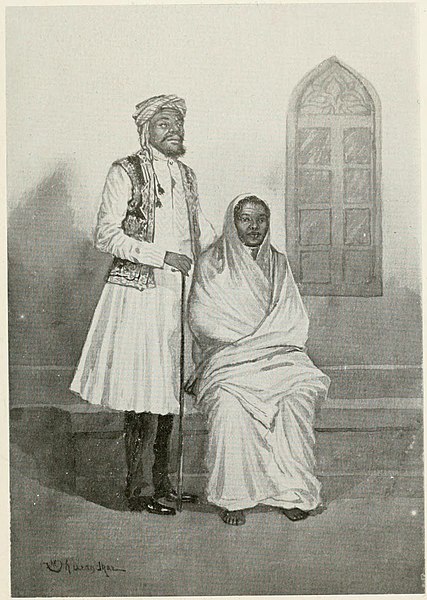India’s Siddi Community Posted by Rachael on Jan 19, 2019 in Hindi Language
India is home to a vast array of ethnicities and cultural and religious groups (सांस्कृतिक और धार्मिक समूह), but among the least well known is the Siddi community (सिदी या शीदि समुदाय), who are of African descent (अफ़्रीकी मूल के) and live throughout India and Pakistan. In this blog, we’ll discuss a recent news article about this group of people and the strides they are making in India today with the help of the Indian government and private athletic organizations.
Read this article to learn more
The Siddi community (known by several alternate names, such as Sidi, Siddhi, Sheedi or Habshi), first made South Asia (namely India and Pakistan) their home centuries (सदी=sing, century, सदियाँ=pl) ago. As is the case with many minority groups in India, very little was known about their culture and way of life until recently when girls from the community began to participate in competitive sports (खेल) in earnest, aiming to win a name (नाम कमाना) for themselves and their communities. This community of about 50 to 60,000 people is concentrated chiefly in remote villages (दूर-दराज़ के गाँव) in Karnataka, Gujarat and Hyderabad and Makran and Karachi in Pakistan. Many of them are descendants (वंशज) of the Bantu community of East Africa.
In roughly 628 AD, the first Siddis arrived in India, and later more arrived with the first Arab Islamic conquests of the subcontinent (उपमहाद्वीप) serving as soldiers (फ़ौजी, सिपाही or सैनिक) with Arab armies. Afterwards, Portuguese and English traders brought them to South Asia as slaves (गुलाम), where they remained. Yet, this is not to say that the Siddis served only one or two roles in society: successive generations of the Siddi community functioned in a wide variety of occupations, such as sailor (नाविक), merchant (सौदागर or व्यापारी), mercenary (भाड़े का सैनिक) and indentured servant (गिरमिटिया). After obtaining their freedom, some Siddi people chose to make their homes in jungle environments and thus remain apart from wider society, while some attempted to assimilate more into local village life.
The above article tells the story of several young people from the Siddi community who have made efforts to enter the world of competitive sports. In the village of Bilki in Karnataka (Karnataka, incidentally, is home to more than a third of today’s Siddi population), 18-year-old Shweta has already competed at the state level (राज्य स्तर) and is working toward her ambition to become a national champion. She states that, through the world of competitive sports, she can achieve a better life for herself and her family: “अगर हमें और अभ्यास के मौके मिले तो हम मेडल जीत सकते हैं. अगर हम मेडल जीतेंगे तो बाकि लोग हमारे काम की तारीफ़ करेंगे और हमें प्रोत्साहित भी करेंगे” (“If I get more opportunities to practice, I can win medals. If I win medals, then other people will praise my work and will encourage me too”). Impressively, her 13-year-old cousin, Florin, has already competed at the district (ज़िला स्तर) and state levels and is following in her cousin’s footsteps to achieve greatness in athletics. Her ambitions may even excel those of her cousin: “मैं नेशनल लेवल तक पहुंचना चाहती हूं और उसके बाद ओलंपिक्स तक और उसके लिए मैं कड़ी मेहनत करती हूँ” (“I want to reach the national level and, after that, the Olympics, and for that I work very hard”).
As a result of living in small, isolated communities in Karnataka, Siddi people like Florin and Shweta speak in the local languages, such as Kannada (कन्नड़) and Konkani (कोंकणी) and dress the same as other local people. Interestingly, their names reflect a blend of Indian, Arab and Portuguese influences. Yet, despite living in these regions for centuries and assimilating with the local people to a great extent, the visibility of their community is not great, people may be ignorant of their culture and, as Shweta states, she is treated as an outsider when she travels outside of her hometown for competitions (प्रतियोगिताएँ). She recounts the challenges of being treated as an outsider despite feeling as though she belongs to and in India: “कुछ लोग सीदी समुदाय के बारे में नहीं जानते वो हमारे बालों को छूते हैं. वो ये भी नहीं जानते कि हम भारत से ही हैं. वो हमसे अंग्रेज़ी में बात करने की कोशिश करते हैं और हमें घूरते हैं. कभी अगर प्रतियोगिता में हमारा अच्छा प्रदर्शन नहीं रहा तो कुछ लोग कहते हैं कि देखो वे अफ़्रीका से हैं फिर भी अच्छा प्रदर्शन नहीं कर पाए. हमें बुरा लगता है पर क्या करें?” (“Some people don’t know about the Siddi community – they touch our hair. They don’t even know that we’re actually from India. They try to talk to us in English and stare at us. Sometimes, if we haven’t performed well in a competition, some people say, ‘look, they’re from Africa but they still couldn’t perform well.’ We don’t like it but what can be done?”).
Feeling cut off from the majority of Indians, this community has suffered with few opportunities (मौके) to better their standard of living such as access to employment (रोज़गार) and other forms of progress (प्रगति or तरक़्क़ी). Fortunately, they were declared a “scheduled tribe” (अनुसूचित जनजाति) in a 2003 amendment to the Indian constitution that is recognized in the states of Goa, Gujarat, Karnataka and the union territory of Daman and Diu. Of course, one of the ways several individuals from this community have succeeded is through competitive sports, with the encouragement of governmental authorities, such as the Indian Sports Authority (भारतीय खेल प्राधिकरण), which has arranged for their athletic training. Karnataka’s Youth Empowerment and Sport Department’s commissioner, K. Shrinivas, describes the situation thus: “सरकार के कुछ स्पोर्ट्स हॉस्टल में भी सीदी समुदाय के लोग रहते हैं. सीदी दूर-दराज़ के इलाकों में रहते हैं तो हमारी कोशिश रहती है कि हम उन तक पहुंचें और उन्हें बताएं कि उनके लिए कौन-कौन सी सुविधाएं हैं ताकि वो पढ़ाई और खेल में आगे बढ़ें. सीदी समाज की लड़कियों का खेल में काफ़ी अच्छा प्रदर्शन रहा है” (“Siddi community members even live in some of the government sports hostels. The Siddi live in remote areas, so our effort remains to try to reach them and tell them which resources are available to them, so they can advance in their studies and in sports. The girls of the Siddi community have performed quite well in sports”).
Besides governmental organizations, private organizations have also stepped in to scout for talent (प्रतिभा) and arrange training (प्रशिक्षण) under the supervision of qualified coaches for both girls and boys of the Siddi Community, such as Bridges of Sports, which searches for talent in students’ schools. This is how 17-year-old Ravi Kiran was recognized for his athletic skills – he now studies and trains alongside Shweta and Florin at the same school. Since the 1980s, many members of the Siddi community have competed on the national and international level (अंतरराष्ट्रीय स्तर) and won acclaim for themselves, their communities and their home country of India, one of whom is Florin’s father, who has been a player (खिलाड़ी) at the national level and hopes that his daughter will carry on the family tradition and achieve what was beyond his reach: “जो मैं नहीं कर पाया, मुझे उम्मीद है मेरी बेटी फ़्लोरीन करके दिखाएगी. देश के लिए मैडल लाएगी. अगर श्वेता नाम कमाएगी तो सब कहेंगे कि हमारे गाँव की बेटी ने नाम कमाया” (I hope my daughter Florin will do what I was not able to. She’ll bring home a medal for her country. If Shweta wins a name for herself (in athletics), everyone will say that our village girl has made us proud”).

Build vocabulary, practice pronunciation, and more with Transparent Language Online. Available anytime, anywhere, on any device.






